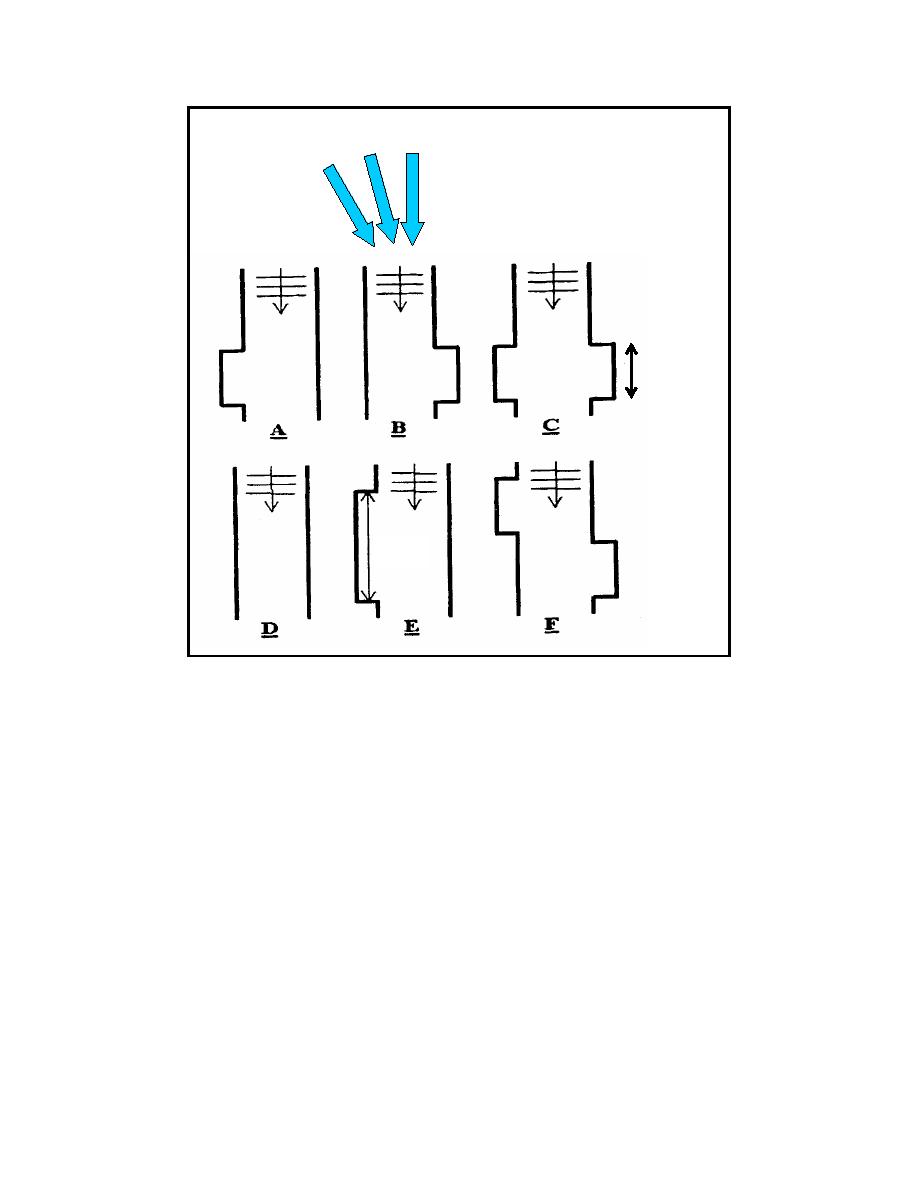
ERDC/CHL CHETN-III-69
March 2004
15 deg
0 deg
30 deg
200 ft
400 ft
Figure 2.
Pocket configurations evaluated in physical model studies (prototype
dimensions)
The constraint of unidirectional, monochromatic waves is a major limitation. Wave irregularity is an
important component of wave interaction with harbor entrances, and monochromatic waves are
prone to exaggerating reflections and spatial variability in both physical and numerical models.
However, wave irregularity may be less critical in applications involving wave propagation between
long, parallel jetty walls. Since experiments were limited in this study, several of the pocket wave
absorber parameters tested yielded inconclusive results. It was recommended that a more detailed
study be conducted before significant conclusions could be made for some of the configurations
tested.
Despite limitations of the physical model study, some preliminary conclusions could be deduced. For
uniform stone size, the study revealed that the effect of stone size on dissipation was negligible, and
that graded stone yielded slightly lower wave dissipation rates than uniform stone. The study also
suggested that dissipation rates based on slope variation were similar. It was found that dissipation
increased erratically with pocket length. This observation led to the consideration that the pocket
length alone may not be a determining factor in wave energy dissipation, but rather the ratio of
pocket length to wavelength might be more significant, at least for pocket lengths less than about one
3



 Previous Page
Previous Page
